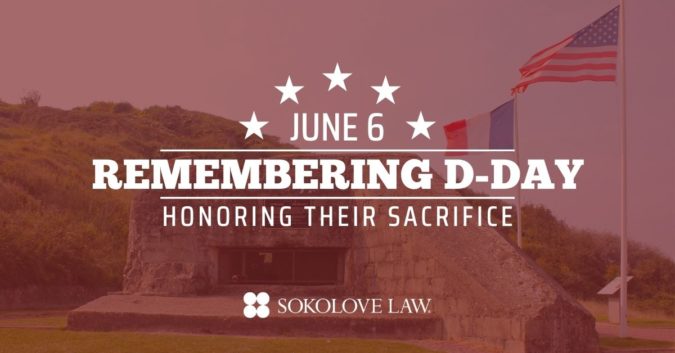Exactly 80 years ago today, the Allied Forces of World War II launched the crucial invasion of Nazi-occupied Europe, landing its armies by land, sea, and air along the coast of Normandy in Northern France. To date, it remains the largest seaborne invasion in human history.
Just hours before the landings, Allied Commander General Dwight D. Eisenhower remarked to the airmen, soldiers, and sailors under his command:
“You are about to embark upon the Great Crusade, toward which we have striven these many months. The eyes of the world are upon you.”
More than 4,400 soldiers would lose their lives that day, including an estimated 2,500 Americans. However, their sacrifices were not made in vain.
D-Day marked the beginning of the end of the Second World War. A grueling slog toward Berlin continued through the following months, ending with Nazi Germany’s unconditional surrender on V-E (Victory in Europe) Day: May 8th, 1945.
However, it’s D-Day that remains the more celebrated date in the United States. Today, on June 6, 2024, we observe the 80th anniversary.
Paying Our Respects to Fallen U.S. Soldiers
As with Memorial Day and Veterans Day, D-Day has become another opportunity for non-military civilians to reflect on the sacrifices made by U.S. veterans and active-duty service members. As much as we, as a nation, do our best to honor these men and women through words, our actions often fall short.
Veterans continue to face extraordinary difficulties adapting to civilian life. They face higher rates of mental illness and substance abuse than the general population, and many suffer physical problems stemming from their time in the military.
Studies of medical records show 1 in every 3 veterans has been diagnosed with at least one mental health disorder. VA reports point to a much higher suicide rate among veterans when compared with the general population.
Many of the problems veterans face stem from their time in the service, and as if that wasn’t enough, veterans also suffer a range of physical ailments, including:
- Chronic pain
- Traumatic brain injury
- Exposure to hazardous substances
Many of these injuries can become lifelong struggles, and a few can be deadly. Learn about available health care resources for veterans.
Veterans & Military Asbestos Exposure
Consider the legacy of asbestos, for example. Breathing airborne asbestos can cause a range of respiratory ailments, including mesothelioma — a deadly form of cancer with no cure.
However, asbestos was widely used throughout all branches of the military for more than half a century, particularly in the construction of naval ships.
As a result, the U.S. Navy is believed to have the highest rate of asbestos use among all military branches.
After decades of deception by the manufacturers of asbestos-containing products, the U.S. military began phasing out asbestos in the 1980s — but thousands of service members had already been exposed.
To this day, veterans face a far higher rate of mesothelioma than civilians. In fact, veterans make up 33% all new mesothelioma diagnoses in the United States.

“When I got told companies knew many years prior what asbestos would do to the human being, I got mad and said, ‘Heck with this noise, they’re gonna hear from me.’”
– Walter, U.S. Navy Veteran & Firm Client
Sokolove Law: Fighting for Veterans Today and Every Day
On remembrance days like D-Day, it’s important for all Americans to take some time to reflect on the freedoms that make our country truly unique.
As a national mesothelioma law firm, Sokolove Law has proudly served veterans with mesothelioma for over 45 years, helping them to get the compensation and VA benefits they need after a diagnosis.
In total, we’ve secured over $5.1 Billion in mesothelioma settlements and verdicts.
If you're a veteran who has mesothelioma, lung cancer, or another asbestos-related disease you believe to be a result of your service in the U.S. Armed Forces, we encourage you to get in touch with us today.
Get started now by calling (800) 995-1212 or getting a free case review.
